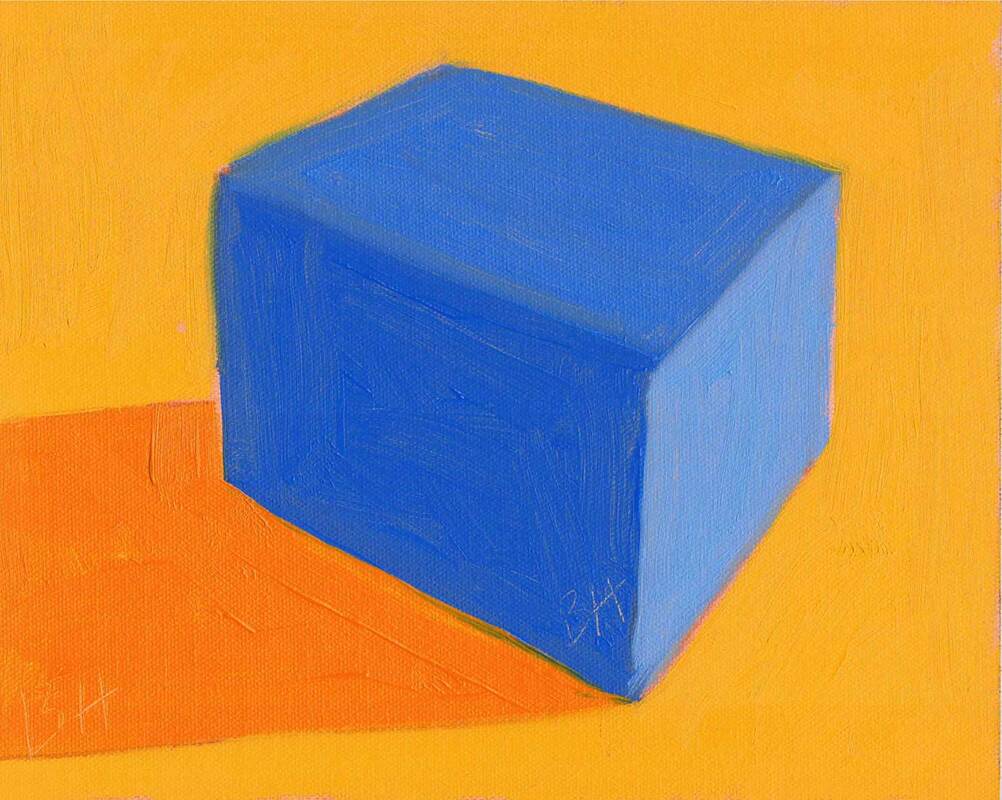LESSON 4 - Page 2 - The Box Painting
In this exercise we'll paint the box, its shadow, and the background.
You will need:
- a toned panel
- a value scale (either the one you made or the one you bought)
- your paints
- several brushes
- your palette
- your knife
- clean and dirty Gamsol
- paper towels
You will need:
- a toned panel
- a value scale (either the one you made or the one you bought)
- your paints
- several brushes
- your palette
- your knife
- clean and dirty Gamsol
- paper towels
Step 1 - Paint the Two Darkest Values
We are painting the box and its background in complementary colors. You may use any of the three complementary pairs (red and green, blue and orange, or yellow and purple). I suggest that you make the box the color that is darkest in your pair. I chose blue and orange, so my box will be blue.
Step 2 - Paint the Lightest Blue and Darkest Yellow (they are the same value)
Step 3- Paint the Lightest Value, the Background
Notes From Lesson 4
- Painting from a black and white photo gives you the choice of color scheme.
- In oil painting we start with the darkest dark and work our way to the lightest of the light colors.
- Use your value sketch to remind you of the value of each shape in the painting.
- Use your value scale (either the one you made or the smaller one that you bought) to mix paint colors that match your value sketch.
- In oil painting we start with the darkest dark and work our way to the lightest of the light colors.
- Use your value sketch to remind you of the value of each shape in the painting.
- Use your value scale (either the one you made or the smaller one that you bought) to mix paint colors that match your value sketch.
